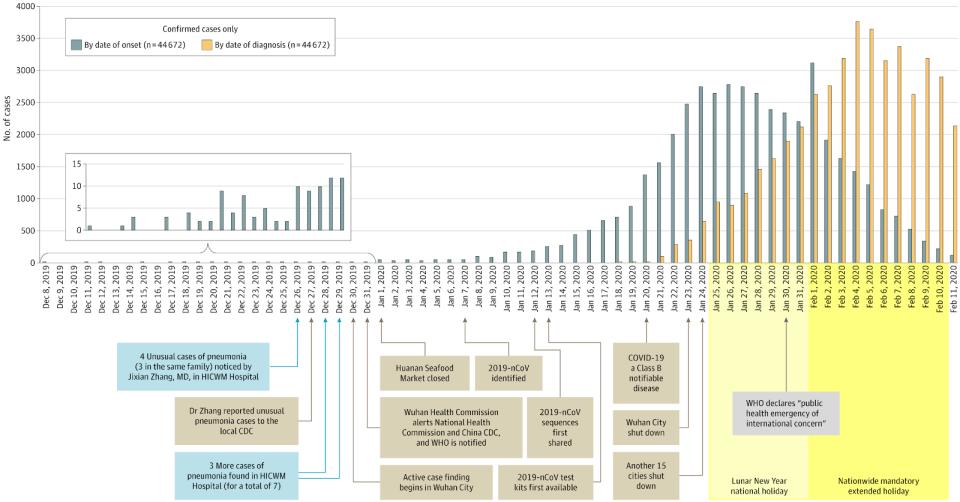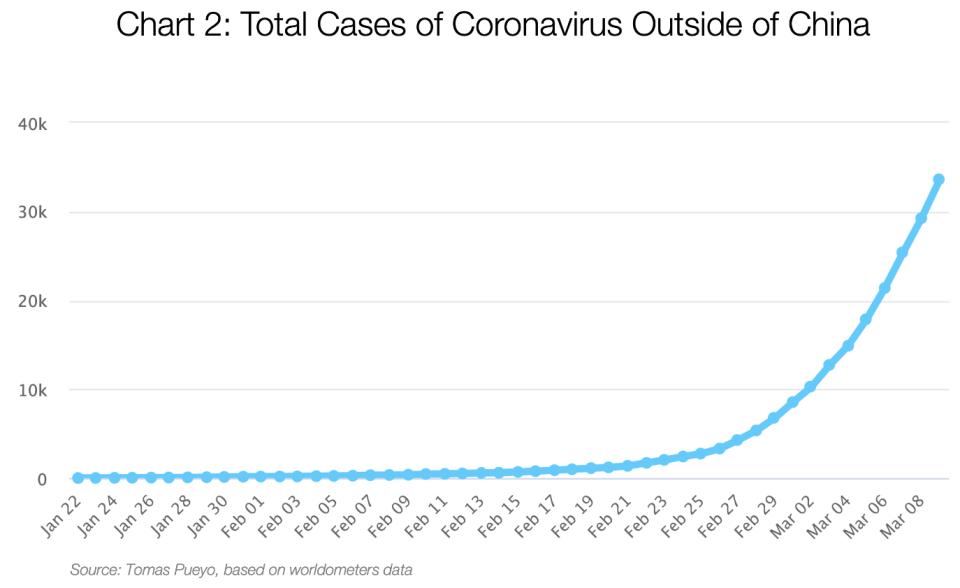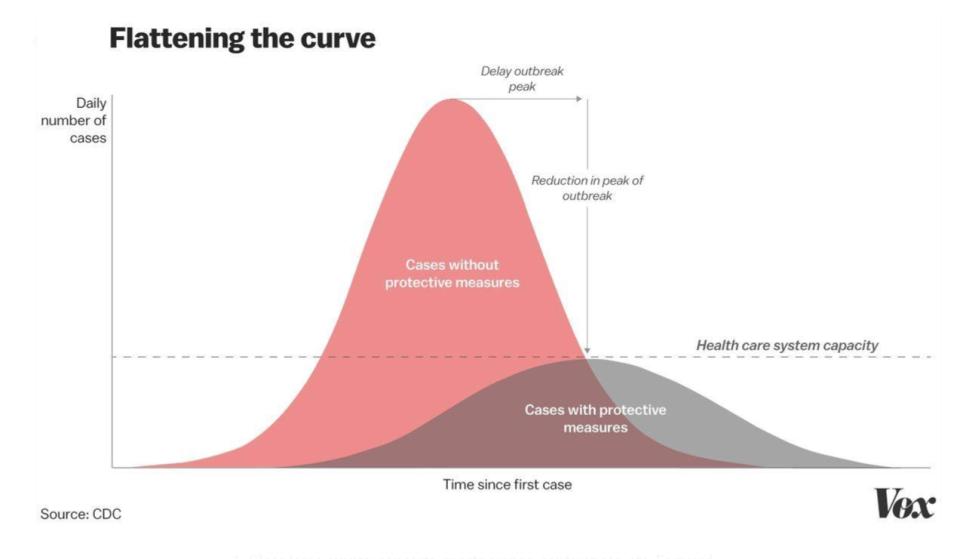What Action is Needed: Bold Decisions to Stop COVID-19
We urge decision-makers to take bold, decisive, and preventive action

As COVID-19 cases continue to skyrocket globally, Professor Hemant Bhargava and UC Davis colleagues recommend decisive action and support systems to put into place.
(Editor's note: This blog originally appeared on Medium on Mar. 12, 2020, and represents the opinions and recommendations of its UC Davis authors: Professor of Technology Management Hemant Bhargava; Professor of Mathematics Joseph Biello; and Research Scientist John Durand, John Muir Institute of the Environment.)
The world is ablaze with the novel coronavirus COVID-19, with nearly 4 million known infections and more than 270,000 deaths as of May 8, 2020. We urge decision-makers to take bold, decisive, and preventive action.
Although many cases will be mild particularly among students, we must be proactive—not reactive—to ensure the protection of our valued campus community members who live and/or work closely with at-risk populations, or are at-risk themselves.
Over spring break, thousands of campus community members were projected to migrate—across California, across the United States, and in some cases, across the globe. They will build innumerable virological bridges into their home communities. When they return, some will bring the virus back, potentially creating a disastrous explosion in infection rates.
What Action is Needed?
Local institutions—schools, universities, and places of gathering—must:
- Move current activities (e.g., classes) to online format and switch to online format for the remainder of the spring semester or the new spring quarter.
- Place significant curbs on inter-community exchange (e.g., on college and university students who go back home and return to campus).
- Recognize and find ways to help people who are disadvantaged by closures or online activity (e.g., those who can’t travel, or join online classes, etc.).
- Communicate explicit, authoritative stances that are actionable and unifying, and give individuals adequate time to plan and execute.

Why are Extreme Measures Needed Now?
Local decision-makers have justified gradual action by noting that they have not yet seen enough evidence of local spread of COVID-19 in our area. This wait-and-see approach goes against the best principles of decision making under uncertainty, especially when there’s a threat of extremely negative consequences.

With COVID-19, there is already sufficient evidence that inaction or “slow action” is the wrong action. The virus spreads among communities at an exponential rate once it lands. Usually the spread occurs silently, undetected, for a few days. By the time it becomes known (after a few days or weeks of the first infection) it reaches a take-off point on the exponential growth curve.

Learn From Italy's Crisis and Pace Out the Demand on Our Health System
In order to support our health care system in the face of an emerging pandemic, we need to act now to shield the most vulnerable members of our population: this includes elders, immune-compromised, teachers and health care workers.
Actions need to be taken now, not after we detect infection. Scientists have shown that the virus has maintained a low-level reservoir in the global population for many months.

When that reservoir reaches a certain percentage in the population, the number of symptomatic infections begins to rise, then growing exponentially.

Learn From the Experience in China and South Kora
That is what happened in China in December, and it is happening in South Korea, Iran and Italy. It will happen in many more countries in a matter of days or weeks, depending upon when the threshold is passed. Because our ability to detect is hampered by testing limitations, we don’t have good knowledge about how quickly we are approaching the threshold.
However, based upon the experience in South Korea and Italy, open societies much like our own in the U.S., the threshold will be passed before we know that we are there. That’s when infections go through the roof and hospitals get overwhelmed.

Act Early and Mitigate Risk
Leaders are waiting until people are sick before taking action. Risk aversion is a poor strategy for this particular problem. Early action is essential. That’s because for every infection detected, there are probably at least 10 to 100 more undetected cases in the population. We have good evidence of the costs of inaction (failing medical system, high mortality), and benefits of bold action (suppressing or delaying infection rates, allowing time for preparation).

There is no reason to expect that the progression will be different in the U.S. from other countries. The leadership of the U.S. must be prepared to take drastic action to contain and mitigate. While the measures may be painful in the short-term, we strongly believe that delay will significantly increase our individual and social costs.
Manage the Hardships and Exceptions
We recognize that closure or online activity will place hardships on many families. We must extend strong support to those who face such hardships. But these cases must be treated as exceptions. We cannot let the fear or concern over hardships paralyze us from taking the right actions today. A delay in taking decisive steps today will not just kick the can down the road, it will imply that worse outcomes will befall those families a few days later.
A Broader Call to Action
Bold, preemptive, action by local leadership and communities is sorely needed. To be fully effective, these actions must be repeated at a national scale. Here is what leaders in the U.S. must do to prevent a tragic burden:
- Close large events, such as concerts, sports arenas, conferences, etc. Forward-thinking industries and institutions have already begun this.
- Close public schools. Because youth tend to be asymptomatic, they are among the major vectors of infection.
- Close university courses or move them online. Extend the closure long enough (e.g., all of Spring quarter or semester) to prevent returning students from picking up and transmitting upon return.
- Place strong restrictions in order to minimize inter-community travel.
- Accommodate hardships. Many students have nowhere to go if schools and universities close, as explained here.
- Support working families. Many people cannot afford to eat or make rent if they cannot work due to closures or childcare responsibilities. New York has already begun to make accommodations that can be replicated elsewhere.

The evidence is clear that early action is necessary. By embracing, not avoiding challenges, and by following what the science shows us, we can assert some measure of control over an otherwise frightening situation.
We realize that implementing our suggestions will cause hardships to some people. We must extend strong support to these people. We cannot let fear paralyze us from taking the right course of action immediately.